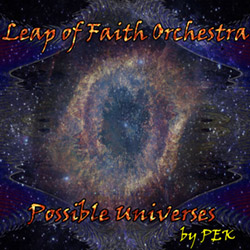
Started in 1995 as an interdisciplinary unit of improvisational artists led by Boston area reedist/multi-instrumentalist David Peck and cellist Glynis Lomon, exploring multi-phonics, glissando, microtones, graphic & descriptive scores, and extended techniques, expanding the ensemble with like-minded musicians, here in this 2017 recording of full 24-piece orchestra.
In Stock
Quantity in Basket: None
Log In to use our Wish List
Shipping Weight: 5.00 units
EU & UK Customers:
Discogs.com can handle your VAT payments
So please order through Discogs
Sample The Album:
David Peck (PEK)-saxophones, clarinets, double reeds
Glynis Lomon-cello, aquasonic, voice
Yuri Zbitnoff-drums, percussion
Andria Nicodemou-vibes, percussion
Mimi Rabson-violin
Matt Scutchfield-violin
Jonathan LaMaster-violin
Dan O’Brien-flutes, clarinets, saxophones
Zach Bartolomei-clarinets, saxophones, melodica
Bob Moores-trumpet
Forbes Graham-trumpet
Kat Dobbins-trombone
Dave Harris-trombone, tuba
John Baylies-tuba
Steve Provizer-trumpet, baritone horn
Grant Beale-guitar, wood
Chris Florio-guitar synthesizer, wood
Eric Zinman-piano, kazoo, slide whistle, wood
Tony Leva-bass
Silvain Castellano-bass
Kit Demos-bass
Syd Smart-drums, percussion
Kevin Dacey-drums, percussion
Joe Hartigan-drums, percussion
Kevin Dacey-drum, percussion
Click an artist name above to see in-stock items for that artist.
Label: Evil Clown
Catalog ID: 9144
Squidco Product Code: 24776
Format: CDR
Condition: New
Released: 2017
Country: USA
Packaging: Jewel Case
Recorded at the Armory in Sommervile, Massachusetts, on May 28th, 2017.
"Possible Universes from the multi-faceted Leap of Faith collective. In the orchestra formation, the group has released some half-dozen recordings but the "full" orchestra is a biannual occurrence where the normally fifteen-piece ensemble grows. On this album, the collaborative expands to twenty-four musicians and, as always, the long-time anchors are composer and reed player PEK (David Peck) and cellist Glynis Lomon.
As is often the circumstance in Leap of Faith Orchestra recordings, the album consists of one very long (almost eighty minutes) title track. The highly capable improvisers engaged by PEK are participating in the composer's unique method of Frame Notation where (as he describes in the liner notes) ..,"written English descriptions of the overall sonority desired and simple graphic symbols are given durations for each player on their part along with direction on when to play and when not to play." The notation looks more like playoff brackets but within are the only directions that the composer chooses to offer-the mechanics of "who" and "when."
What is not within the brackets are melodic or rhythmic data, placing Possible Universes in an often frenzied situation as the improvisations develop within controlled blocks of time and space. Along with strings and three basses, a large assortment of percussion instruments, and two tubas, the orchestra utilizes an assortment of non-conventional devices such as bullroarers, claves, flex-a-tones, slide whistles, wind sirens, crank sirens, bells, Tibetan bowls, ratchets and a tube-o-phone. Even in the midst of scores of instruments, the piece utilizes silence as a much-needed balance.
The Leap of Faith catalog has grown at a rapid pace in recent years; remarkable in that the collective and the enormous orchestra stay largely intact through these always complex works. Possible Universes works in a surprisingly paradoxical way, allowing structure and freedom to coexist, while constantly challenging the ear. It's not quite like anything else."-Karl Ackermann, All About Jazz
Get additional information at All About Jazz
Artist Biographies
• Show Bio for David Peck (PEK) "PEK (aka David Peck) is a multi-instrument improviser who plays all kinds of instruments including saxophones, clarinets, double reeds, percussion, electronics and auxiliary sound making devices of all kinds. PEK was born in 1964 and started playing clarinet and piano in elementary school. In 7th grade he started saxophones, first on alto, then switching to tenor in high school. He spent 10 years playing in rock bands and studying classical and jazz saxophone with Kurt Heisig in the San Jose CA area before moving to Boston in 1989 to attend Berklee where he studied performance with George Garzone. While Berklee was an excellent place to study harmony, voice training and other important aspects of a conventional formal music training course of study, it was not a very good environment for learning contemporary (or pure) improvisation (apart from his work with George). PEK did find, however, that Boston had a thriving improvisation scene, and it was here that he developed his mature pure improvisation language. During the 90s, PEK performed with many notable improvisers including Masashi Harada, Glynis Lomon, William Parker, Laurence Cooke, Eric Zinman, Glenn Spearman, Raqib Hassan, Charlie Kohlhase, Steve Norton, Keith Hedger, Mark McGrain, Sydney Smart, Matt Samolis, Martha Ritchey, Larry Roland, Dennis Warren, Yuri Zbitnov, Craig Schildhauer, Keith Fullerton Whitman, Leslie Ross, Rob Bethel, Wayne Rogers, Eric Rosenthal, Taylor Ho Bynum, Tatsuya Nakatani, James Coleman, B'hob Rainey and George Garzone. PEK met cellist Glynis Lomon when they played together in the Masashi Harada Sextet which existed between 1990 and 1992. They developed a deep musical connection which they continued following the MHS; first with the Leaping Water Trio for a few years and then with the first version of Leap of Faith in 1994. Leap of Faith was very active in Boston from that time until 2001 and went through a series of several core ensembles which always included both PEK and Glynis. Other key Leap of Faith core members during this period were Mark McGrain (trombone), Craig Schildhauer (double bass), Sydney Smart (drums), Yuri Zbitnov (drums) and James Coleman (theremin). Leap of Faith was always a very modular unit with constantly shifting personnel and many different guests. The early Leap of Faith period concluded in 2001 with a dual bill at an excellent room at MIT called Killian Hall with George Garzone's seminal trio the Fringe. At this time, PEK changed careers for his day gig, returning to college for a computer science degree and beginning to work in the structural engineering industry at Simpson Gumpertz & Heger. He became far too busy to continue the heavy music schedule, and preferring not to do music casually, he entered a long musically dormant period. Flash forward to early 2014. PEK was a regular mail order customer of Downtown Music Gallery, the premiere specialty shop in Manhattan for free jazz, contemporary classical and other new music. While in New York on SGH business, he went down to DMG and had a lengthy conversation with proprietor Bruce Lee Gallanter about the early Leap of Faith period. He then sent Bruce a package of about 15 CD titles from the 90s and was pleasantly surprised when Bruce managed to sell nearly all of it. This public interest in the old catalog spurred PEK into getting back into performance. He reformed Leap of Faith with Glynis Lomon (cello, voice, aquasonic), Yuri Zbitnov (drums) and newcomer Steve Norton (clarinets and saxophones) and started to record and perform in early 2015. Now having access to financial resources always absent in the early period, PEK began to accumulate a huge collection of instruments both for himself and also to expand the palate of Leap of Faith and the other projects soon to follow. He acquired new recording equipment and many new saxophones, clarinets, double reeds, metal and wooden percussion instruments, electronic instruments, signal processing equipment and other sound-making devices from many cultures. He revived his old record label, Evil Clown, and created reissues and new releases for much of the early period work by Leap of Faith and many of his other projects to sell at shows, DMG and the internet (around 100 archival titles). The Arsenal of equipment has a grand purpose: To establish a large scale aesthetic problem to use the instruments to make long form broad palate improvisations with dramatic transformation and development. The very broad palate enables the long improvisations to evolve with very different movements and pronounced development over their length. PEK started the Leap of Faith Orchestra, a greatly expanded Leap of Faith, to achieve this purpose along with a number of smaller ensembles which are sub-units of the full orchestra including String Theory (focusing on orchestral strings), Metal Chaos Ensemble (focusing on metallic percussion), Turbulence (horn players), Mekaniks (electronics) and Chicxulub (space rock). In all, the Evil Clown roster includes over 40 musicians who contribute to one or more of the various projects, with PEK participating in all of them. Leap of Faith has also had some special guests like Steve Swell (trombone), Thomas Heberer (trumpet), Jeremiah Cymerman (clarinet) and Jim Hobbs (alto sax). The Leap of Faith Orchestra happens whenever several of these groups play together at the same time, or the ensemble exceeds 7 or 8 players. The Full Orchestra is a special case discussed below. The current roster is comprised in part of: - Core Leap of Faith: PEK, Glynis Lomon, Yuri Zbitnov (Steve Norton has since left to go to Graduate School) - Percussion: Andria Nicodemou (vibes), Kevin Dacey (perc), Joe Hartigan (perc), Syd Smart (drums) - Strings: Jane Wang (cello), Clara Kebabian (violin), Tony Leva (bass), Mimi Rabson (violin), Kirsten Lamb (bass), Brendan Higgins (bass), Silvain Castellano (bass), Rob Bethel (cello), Kit Demos (bass), Matt Scutchfield (violin), Helen Sherrah-Davies (violin) - Piano: Eric Zinman, Peter Cassino, Emilio Gonzales - Horns: Dave Harris (tuba, trombone), Charlie Kohlhase (saxes), Bob Moores (trumpet), Sara Honeywell (trombone), Forbes Graham (trumpet), John Baylies (tuba), Dan O'Brien (woodwinds), Zack Bartolomei (woodwinds), Kat Dobbins (trombone), Steve Provizer (trumpet, baritone horn), Matt Samolis (flute) - Electronics: Greg Grinnell, Jason Adams (electric bass, electronics) - Guitar: Dru Wesely, Grant Beale, Chris Florio - Voice: Dei Xhrist Evil Clown is documenting the ongoing solutions to this aesthetic challenge by creating limited CD editions and digital download albums of every performance and studio session by this array of ensembles. Interested audience can track the development of the grand scale project over the many releases - over 80 albums recorded and released so far between Jan of 2015 and March of 2017. All of the bands are highly modular, changing personnel and instrumentation with each meeting. The result is an enormous amount of music that shares the same fundamental improvisational language but differs from event to event greatly both in sonority (overall sound) and specific detail. For the full Leap of Faith Orchestra, PEK composes a graphic notation score to guide the improvisation. The full Orchestra is comprised of roughly 20 players from the roster and performs twice a year. Two performances have occurred to date - The Expanding Universe in June of 2016 and Supernovae in November of 2016. Composition for Possible Universes is completed and the work will be performed on May 28, 2017 with another performance (score not yet begun) scheduled for November. The scores use a device called Frame Notation where written English descriptions of the overall sonority desired and simple graphic symbols are given durations for each player on their part along with direction on when to play and when not to play. The directions are put in little boxes called frames which are arranged on a timeline and are simple enough to be immediately understood by the performers. Horizontal lines, called Duration Bars, extend across the page indicating when each Event (the Frame + the Duration Bar) begins and ends. An Event can be intended for the full ensemble, a defined group within the ensemble (for example, Metal Chaos Ensemble), a custom group (for example, Tubas), or an individual (for example, Andria Feature). Parts are the full score annotated with Hiliters so that each player's instructions stand out. They can clearly see their individual instructions, but can also see the big picture, enabling far more knowledge about the pending actions of the rest of the ensemble than typical in pure improvisation. The players track the elapsed time on a very large sports clock. There is no melodic, harmonic or rhythmic information specified. This system allows PEK to compose detailed Ensemble Events without having to notate pitches or rhythms which would require significant rehearsal to accurately achieve." ^ Hide Bio for David Peck (PEK) • Show Bio for Glynis Lomon "Improvising cellist, vocalist and aquasonic player Glynis Lomon graduated from Bennington College in 1975 with a degree in Music/Black Music. At Bennington she studied with musician/composer Bill Dixon and continued to perform and record with his ensembles until his recent death. Glynis has also been privileged to play with Arthur Brooks, Jimmy Lyons, Cecil Taylor, Butch Morris, William Parker, Joe Morris, Greta Buck, Masashi Harada, Lowell Davidson, Raqib Hassan and many others. For almost a decade she and multi reed player PEK performed in the Boston area with their group Leap of Faith." ^ Hide Bio for Glynis Lomon • Show Bio for Yuri Zbitnoff "Yuri Zbitnoff is a drummer/composer/arranger who has been simultaneously providing cutting edge musical entertainment and fomenting revolution of the mind for over 20 years. Yuri can be heard playing in Atompunk Go-Go Jazz pioneers Mission Creep as well as jazz/rock powerhouse, Axemunkee. Yuri is perhaps best known for his nearly 10 year stint with the roiling cauldron of apocalyptic cosmic jazz thunder known as Enuma Elish. From 2000 to 2008, Yuri ran Lithiq, a label dedicated to promoting music at the nexus of electronic music, jazz and rock. During this time, Yuri released albums by both Enuma Elish and Sky Saw and performed with SpiralZero, Caduceus, and many others. Yuri's association with PEK dates back to the late 90's and includes numerous performances with Raqib Hassan's ensembles as well as Leap of Faith. All of these recordings are available on Evil Clown." ^ Hide Bio for Yuri Zbitnoff • Show Bio for Andria Nicodemou "Andria Nicodemou is a multifaceted musician from Cyprus, specializing in vibraphone and improvisation. She is a graduate from Corfu University in Classical Percussion and has received a Master's Degree from the New England Conservatory, in Contemporary Improvisation. She has been working in diverse interdisciplinary art projects, with multi-media artists, dancers and actors in Europe and USA. She has worked with musicians such as Joe Morris, Anthony Coleman, Marty Ehrlich, Ikue Morri, Tayler Ho Bynum, Tatsuya Nakatani, Ab Baars, Anne La Berge, Gianni Lenoci, Jim Hobbs, Marc Sanders, among others. She was a guest performer at the London Improvisers Orchestra (2015) and the Royal Improvisers Orchestra in Amsterdam (2014). Andria is the co-founder of the Thread Ensemble, a story-telling, improvisatory trio a result of a 2012 Ensemble Fellowship in NEC's Community Performances & Partnerships Department. With their unique teaching approach, Thread Ensemble has been performing and giving interactive workshops in the Boston Public Schools, ever since. With her unique voice she has established herself as one of the important emerging musicians in the experimental, improvised music idioms. In July of 2014 she received the honorary visa for prominent artistic personalities, 'Artist with an extraordinary ability in the fields of art' from the USA." ^ Hide Bio for Andria Nicodemou • Show Bio for Mimi Rabson "Mimi Rabson has distinguished herself as one of Boston's most creative and versatile musicians. She is a first-prize winner of the Massachusetts Cultural Council Fellowship in composition. Her compositions and arrangements are published by StringLetter Press (distributed by Hal Leonard). Her published works include arrangements of music by Duke Ellington, James Brown and Cole Porter as well as her originals. Her music and her articles frequent the pages of Strings Magazine. Her newest compositions include a formal string quartet performed and recorded by the Berklee Chamber Players and a string trio that offers classically trained musicians an outlet for improvisation. Ms. Rabson commissioned 6 fellow Berklee faculty members to compose new works for solo violin. Those works range in style from rock to hip hop and include contemporary practices like improvisation, interaction with computer and effects pedals. She used her electric violin in a power trio setting with electric bass and drums to record "Music", featuring noise-rock, post-jazz and electro-acoustic compositions and improvisations. Ms. Rabson created RESQ - the Really Eclectic String Quartet that plays her compositions and arrangements of jazz, funk, fusion, gospel and Latin music. That group produced two recordings. Ms. Rabson was a founding member of the Klezmer Conservatory Band and worked with that organization for many years touring, recording, composing and acting as musical director.Ms. Rabson appeared with Itzhak Perlman on the recording called "In the Fiddler's House" and on "The Late Show with David Letterman". She was featured in a documentary about Klezmer music called "A Jumpin' Night in the Garden of Eden". Ms. Rabson served as musical director to academy award winner, Joel Grey in his production of "Borschtcapades '94". Her composition "Klezzified" was featured on Saturday Night Live. Ms. Rabson's other performance credits include the premiere of "Fresh Faust" by Leroy Jenkins, soundtrack for "Sensorium"- the award winning film by Karen Aqua, with Robert Plant and Jimmy Page, Stevie Wonder, Meatloaf, Kristin Chenoweth, the Boston Gay Men's Choir, the Boston Camarata, the New England Ragtime Ensemble, the Klezmatics, Deborah Henson-Conant, the Pablo Ablanedo Octet, and XLCR. She has appeared on A Prairie Home Companion twice, at Avery Fisher Hall, Lincoln Center Out of Doors, Wolf Trap, the Mann Center, the Place des Arts in Montreal and other world class venues. Ms. Rabson is a sought after clinician. She has presented at The Mark O'Connor Fiddle Camp, ASTA, and numerous schools and colleges. Ms. Rabson has had compositions played by the Jazz Composers Alliance. Ms. Rabson is an Associate Professor at the Berklee College of Music and has received several Berklee grants to support her creative endeavors. She is a Yamaha String Educator." ^ Hide Bio for Mimi Rabson • Show Bio for Matt Scutchfield "Matt Scutchfield is a multi-instrumentalist performing bluegrass, jazz, blues, folk, rock, pop, world, and improvisational musics. He's also a composer, and has composed several caprices & opuses and one symphony. Matt is available for solo or band shows and private teaching." ^ Hide Bio for Matt Scutchfield • Show Bio for Jonathan LaMaster Jonathan LaMaster is an American violinist and guitarist based in Boston. He is known for the groups Cul de Sac, Saturnalia String Trio, Brian Carpenter & The Confessions. ^ Hide Bio for Jonathan LaMaster • Show Bio for Bob Moores "Bob Moores Having spent most of his life flying under the radar working on obscure projects that may some day come to the light of day, trumpeter/guitarist/composer/improviser/artist/photographer/poet/conceptualist Bob Moores has finally started to emerge into the light playing in the free improvisation collective Fable Grazer and through his solo project Resonator. Having played every kind of music imaginable on trumpet in every kind of setting from classical to funk to blues to R&B to pop punk and metal to jazz, in small and large ensembles, Bob has settled on playing only freely improvised music at this stage of his evolution, both in group situations and as a solo artist. Moores is an exponent of what he calls unschooled primitive coloristic guitar having started to play in earnest with Fable Grazer. He has been composing music since he was a child and composes and arranges for a variety of ensembles types, instrumentations and genres." ^ Hide Bio for Bob Moores • Show Bio for Forbes Graham "Forbes Graham born 1977 in Washington, DC. Forbes Graham is a trumpet player, electronic musician, and composer living and working in Boston, Massachusetts. He has worked with a diverse array of musicians and currently is a member of Para Quintet, Rock Flint Contemporary Ensemble, Wild May, Jazz Composers Alliance Orchestra, Grizzler, Construction Party, Equal Time and Citizens Orchestra. He is the founder of the Rock Flint Artists Retreat, and has appeared at numerous festivals including High Zero, Full Force, and Vision." ^ Hide Bio for Forbes Graham • Show Bio for Kat Dobbins "Kat Dobbins graduated with a Bachelor of Music in Trombone Performance from The Boston Conservatory in May 2009, and is an avid performer and teacher in the Greater Boston Area. Miss Dobbins taught at Natick Public Schools, and has an active and rapidly expanding private studio. Kat is a member of The Frequency Band, and enjoys performing for Musical Theater Pits, Orchestras and Chamber Ensembles. She frequently subs with the Boston Civic Symphony, and has performed with The Mercury Orchestra, Turtle Lane Playhouse and the Boston New Music Initiative." ^ Hide Bio for Kat Dobbins • Show Bio for Dave Harris "Trombonist, pianist and composer/arranger David Harris is a member of Naftule's Dream, a klezmer-influenced, avant jazz band based out of Boston. Harris also co-founded Brass Planet, an eclectically styled ensemble of trombones, tuba and drums. Born in St. Louis, Harris graduated from the New England Conservatory around 1980, and has remained in the Boston area since. Harris has performed various styles of music including jazz, classical and folk on over 30 recordings, and has performed around the world from North America to Australia, throughout Europe and in Japan. He has performed at many venues and festivals of note, including The Smithsonian Institute, the Blue Note, the Knitting Factory, the Berlin Jazz Festival and the Montreal Jazz Festival. A past featured soloist of Les Miserables Brass Band, Harris continues to compose and arrange for them. He also is a founding member of the Klezmer Conservatory Band, and recorded with them for three albums. Harris has performed music for television commercials and film soundtracks including Stranger Among Us and Woody Allen's Deconstructing Harry. A '90s recipient of the Massachusetts Cultural Council Fellowship's first prize for music composition, Harris and his wife, violinist Mimi Rabson, remain in the Boston area where he teaches piano, computer music and trombone. In 1998, Naftule's Dream released Smash, Clap!, their second album for the Tzadik label's Radical Jewish Culture series." ^ Hide Bio for Dave Harris • Show Bio for John Baylies "John Baylies busked extensively after graduating from Boston University with a bachelors degree in tuba performance. This led to regular gigs with diverse brass and marching bands. Keiichi met John at a few of those gigs and asked him to play in a rootsy free improv trio centered around a three-piece, kinetic, interactive, sculptural installation. John had a blast, and dug into the scene. One night, at a basement jam sesh, he was introduced to Erik Nugent, the inventor of the chromatic didgeridoo. Erik's goal of bringing chromaticism to the didgeridoo, and John's interest in utilizing didgeridoo techniques on the tuba, merged excitingly. Erik crafted nu mouthpiece prototypes with his lathe, and John gave feedback about the designs. They launched a successful crowdfunding campaign, exhibited at ITEC and ITF, and as of now, about 70 musicians are supporting a catalyst for the fusion of what are no longer two distinct sonic worlds. John savors intertwining the sonorous sounds of low brass with the ancient tones of the didgeridoo, and often incorporates live audio effects with various MIDI controllers." ^ Hide Bio for John Baylies • Show Bio for Grant Beale Grant Beale is a Boston-area guitarist, an artist Instructor at Greater Hartford Academy of the Arts. ^ Hide Bio for Grant Beale • Show Bio for Chris Florio "Chris Florio is an Ipswich, Mass. resident and award winning composer and performer. His works have been performed by the New Jersey Symphony Orchestra, the Metrowest Symphony, the Greater Trenton Symphony and the Berklee Contemporary Orchestra. He has released five albums of his compositions on Passion Records as well as albums of improvised duets with guitarist Jonathan Keezing, woodwind player Hiro Honshuku. He has performed and Recorded with Full Metal Revolutionary Jazz ensemble (Drimala Records). Chris teaches game audio, animation and game programming at the New England Institute of Art and lives in Ipswich with his wife Helen, a young terrier, a barn cat and a rescued race horse." ^ Hide Bio for Chris Florio • Show Bio for Eric Zinman "Eric Zinman was born and educated in Boston, MA . He studied music/composition with Bill Dixon at Bennington College and later George Russell and Jimmy Giuffre at New England Conservatory. He formed a piano trio with percussionist Laurence Cook, bassist Craig Schildhauer and later bassists John Voigt and Jacob William. For years, he has been an active producer, performer and organizer and composer and arranger of ensembles in Boston including Citizen's Orchestra with Stanley Jason Zappa and the ensemble New Language Collaborative with Syd Smart, drums and Glynis Lomon, cello. Turning away from the music scene he worked in theatre, with poets and with painter Linda Clave. Mr. Zinman has collaborated with artist, Aldo Tambellini in presenting performances which used Tambellini's films, videos and poetry read with poet singer actress Lo Galluccio. In 2006, he began to play and gain recognition in Europe in collaboration with Austrian based musician/artist Mario Rechtern, and a trio with French bassist Benjamin Duboc and percussionist Didier Lasserre and later Makoto Sato with bassist Yoram Rosillio He has performed in 6 different countries and has been reviewed in 5 different languages. Since 2005 musician/composer Eric Zinman has been recorded and produced on Cadence(US), Ayler, (France) Studio234(USA), Improvising Beings(France. ) and"Nottwo Records(Poland). He is listed in the 19th edition Penguin Guide To Jazz Recordings." ^ Hide Bio for Eric Zinman • Show Bio for Tony Leva "I am improvisor, collaborator, educator and performer. I can often be found on stages throughout the USA playing songs or accompanying theater and puppetry with: Bury Me Standing, Jaggery, and They Gotta Be Secret Agents. I am also an active collaborator/educator at Tunefoolery, an artist collective of musicians in mental health recovery. I love studying the bass, creating music and collaborating with others while sharing what I learn with students and music lovers of all ages. My own study translates directly to the musicians with whom I play and also to the students whom I teach. As I am able to connect more deeply with my own music, I am able to facilitate others connecting to music. By expanding my own ideas of what music is and how people can play music and create sounds, I can then encourage others to do the same in their own way. I currently teach bass at Rockport Central School and offer private lessons. Please contact me at anthonycolinlevaATgmailDOTcom if you are interested in lessons or if you'd just like to say hello! I also study the sintir (a North African bass lute) and have occasionally performed on trumpet, melodica, accordion and clown nose." ^ Hide Bio for Tony Leva • Show Bio for Silvain Castellano Boston area bassist Silvain Castellano is known for the bands Leap of Faith and Leap of Faith Orchestra. ^ Hide Bio for Silvain Castellano • Show Bio for Kit Demos "Chrys 'Kit" Demos: bass, DIY analog microtonal synthesizer, Boston-based, with extensive collaborations across the music spectrum." ^ Hide Bio for Kit Demos • Show Bio for Joe Hartigan "Joe Hartigan graduated Magna Cum Laude from the University of Massachusetts Lowell in 2015, with a double degree in Music Education and Music Performance. He studied with Jeff Fisher (Boston Ballet), Fred Buda (Boston Pops), James Lattini and Mark Wheeler. At UML Joe received the Robert Loyola Scholarship for percussion performance in 2014, and received the UML distinguished Performer Award in 2015. As an educator Joe has worked for the Community Music Center of Boston where he has worked as an elementary school music teacher in the Boston Public Schools, taught private drum lessons, coached rock/jazz ensembles and runs an Early Childhood drum class. He has also worked as a private drum teacher for Univeristy Music in Lowell and Miguel's School of Music in Dracut. As a performer, Joe has played throughout the New England area with a number of different ensembles, with varying styles of music ranging from classical to jazz and pop. As a freelance performer, Joe has played in the Concord Orchestra, the Carlisle Chamber Orchestra, the Mid-Atlantic Wind Symphony, Roma Italian Marching Band, Boston Windjammers and St. Alfios Italian Marching Band. Joe is an active member as a drum kit player in the Deep Blue "C" Studio Orchestra, Diversions (jazz/latin) and Visionary (world music). Joe was a founding member in his own groups Slam Kitchen (funk/hip-hop), Spooky Ghost (psychedelic funk rock) and Glove Pilot (experimental jazz)." ^ Hide Bio for Joe Hartigan
7/7/2025
Have a better biography or biography source? Please Contact Us so that we can update this biography.
7/7/2025
Have a better biography or biography source? Please Contact Us so that we can update this biography.
7/7/2025
Have a better biography or biography source? Please Contact Us so that we can update this biography.
7/7/2025
Have a better biography or biography source? Please Contact Us so that we can update this biography.
7/7/2025
Have a better biography or biography source? Please Contact Us so that we can update this biography.
7/7/2025
Have a better biography or biography source? Please Contact Us so that we can update this biography.
7/7/2025
Have a better biography or biography source? Please Contact Us so that we can update this biography.
7/7/2025
Have a better biography or biography source? Please Contact Us so that we can update this biography.
7/7/2025
Have a better biography or biography source? Please Contact Us so that we can update this biography.
7/7/2025
Have a better biography or biography source? Please Contact Us so that we can update this biography.
7/7/2025
Have a better biography or biography source? Please Contact Us so that we can update this biography.
7/7/2025
Have a better biography or biography source? Please Contact Us so that we can update this biography.
7/7/2025
Have a better biography or biography source? Please Contact Us so that we can update this biography.
7/7/2025
Have a better biography or biography source? Please Contact Us so that we can update this biography.
7/7/2025
Have a better biography or biography source? Please Contact Us so that we can update this biography.
7/7/2025
Have a better biography or biography source? Please Contact Us so that we can update this biography.
Have a better biography or biography source? Please Contact Us so that we can update this biography.
7/7/2025
Have a better biography or biography source? Please Contact Us so that we can update this biography.
7/7/2025
Have a better biography or biography source? Please Contact Us so that we can update this biography.
Track Listing:
1. Possible Universes 1:17:13
Improvised Music
Free Improvisation
Large Ensembles
Boston Area Improvisers
Staff Picks & Recommended Items
Evil Clown 2025 RSD Sale
Search for other titles on the label:
Evil Clown.


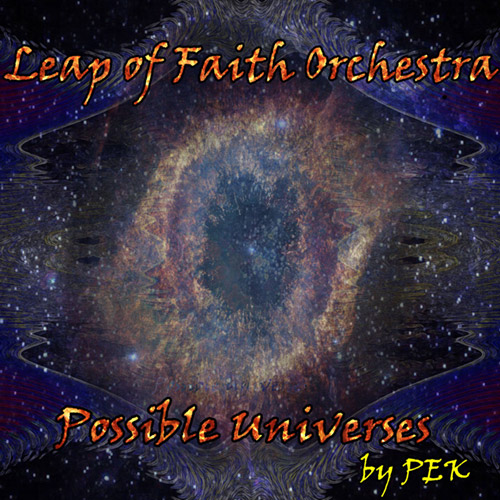

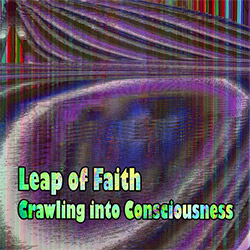
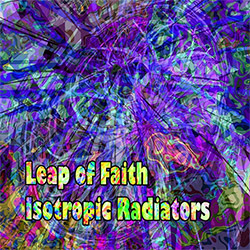

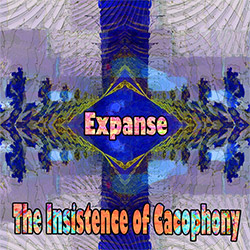
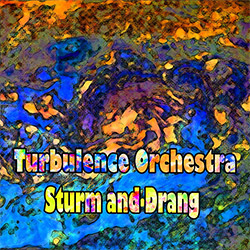
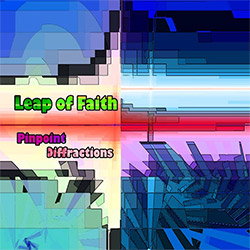
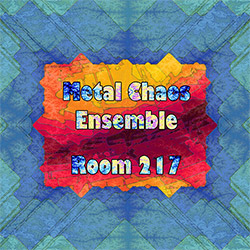
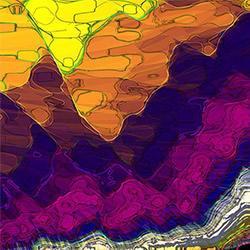
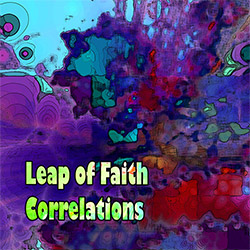
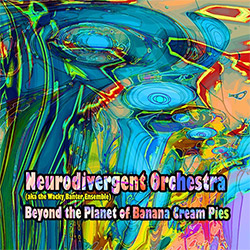
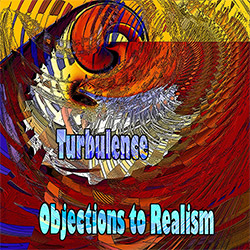
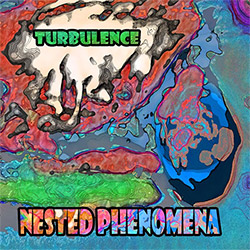
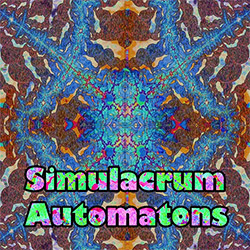
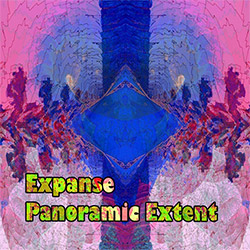
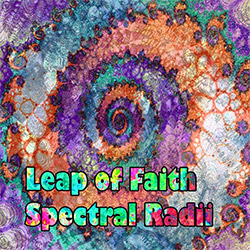
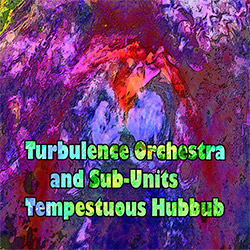
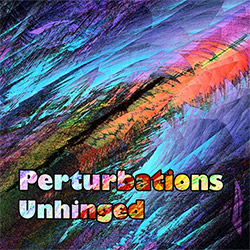
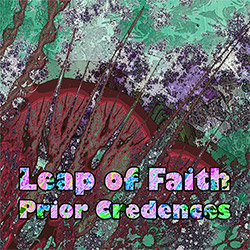
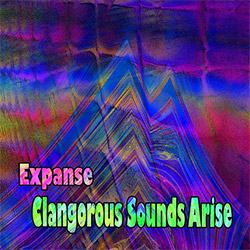
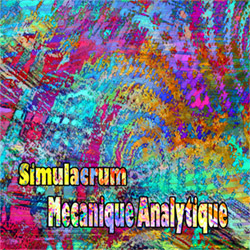
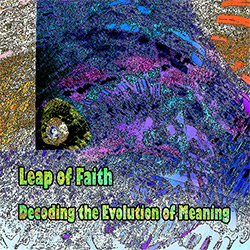
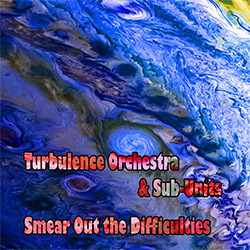
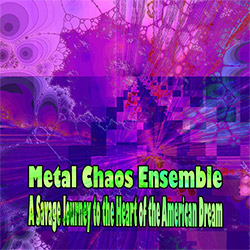
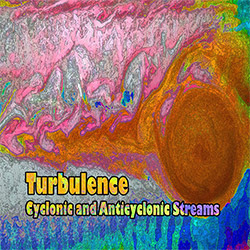
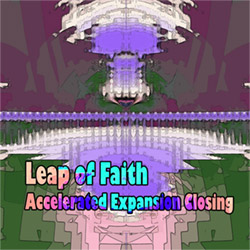

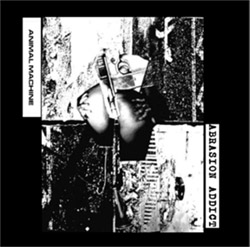

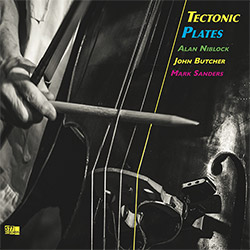
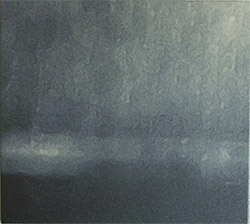

![+DOG+: The Light Of Our Lives [2 CDs]](https://www.teuthida.com/productImages/misc4/36009.jpg)

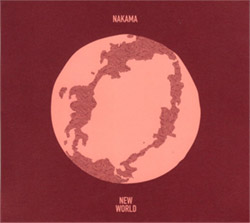
![Parker, Evan / Jean-Marc Foussat: Insolence [VINYL]](https://www.teuthida.com/productImages/misc4/36398.jpg)
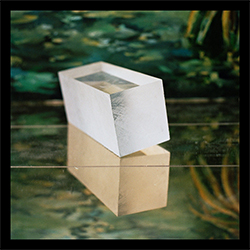
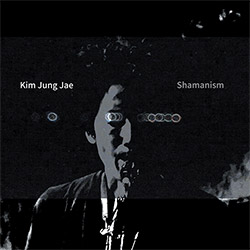
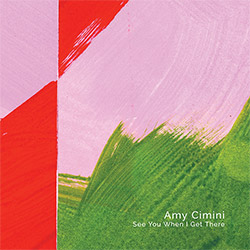
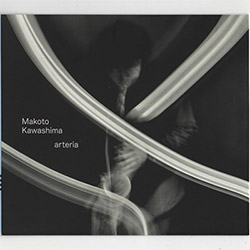

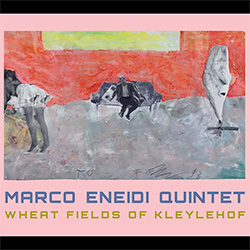
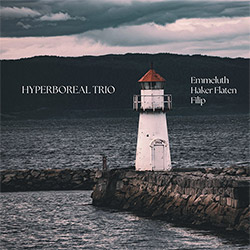
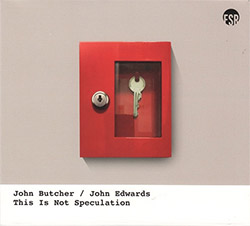
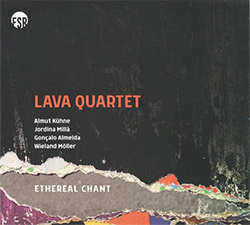
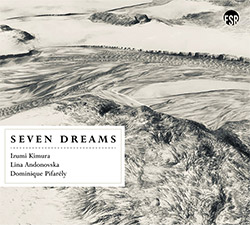
![Deupree, Jerome / Sylvie Courvoisier / Lester St. Louis / Joe Morris: Canyon [2 CDs]](https://www.teuthida.com/productImages/misc4/36404.jpg)
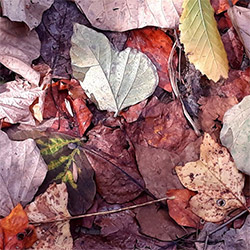
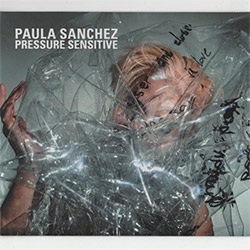
![Eternities: Rides Again [CASSETTE]](https://www.teuthida.com/productImages/misc4/36247.jpg)
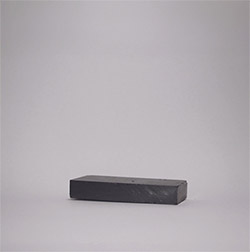
![Lopez, Francisco: Untitled (2021-2022) [2 CDs]](https://www.teuthida.com/productImages/misc4/36438.jpg)
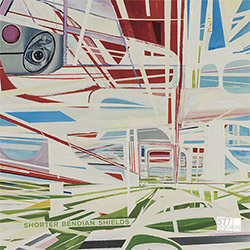
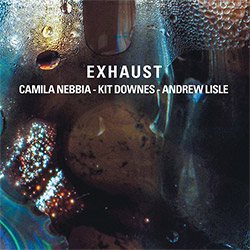
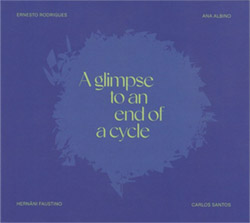
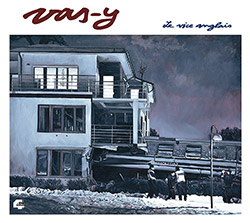
![Eventless Plot | Haarvol: The Subliminal Paths [CASSETTE + DOWNLOAD]](https://www.teuthida.com/productImages/misc4/36232.jpg)


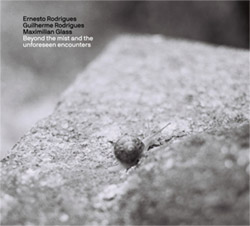

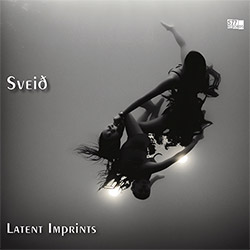
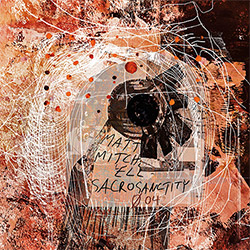
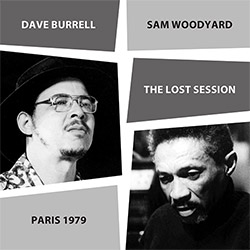
![Eventless Plot | Francesco Covarino: Methexis [CASSETTE + DOWNLOAD]](https://www.teuthida.com/productImages/misc4/36231.jpg)
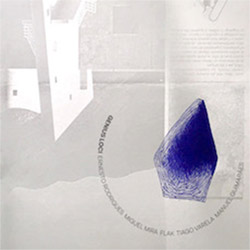
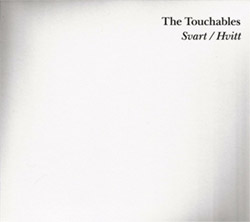
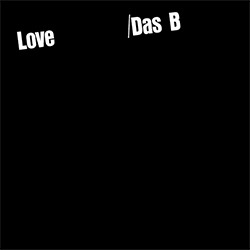
![Das B (Mazen Kerbaj / Mike Majkowski / Magda Mayas / Tony Buck): Love [VINYL]](https://www.teuthida.com/productImages/misc4/36329.jpg)
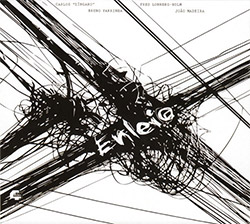
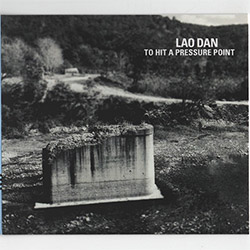
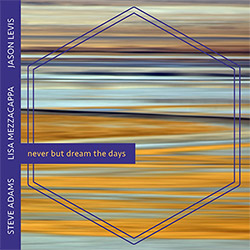
![Hemphill Stringtet, The: Plays the Music of Julius Hemphill [VINYL]](https://www.teuthida.com/productImages/misc4/36409.jpg)
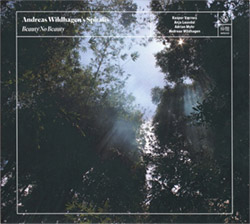
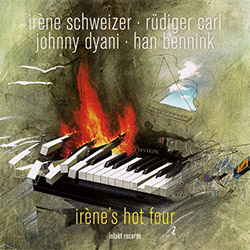
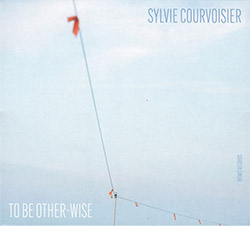
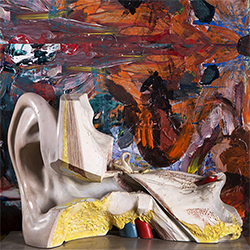

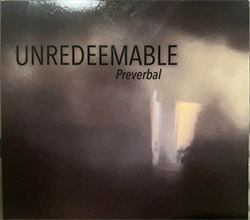
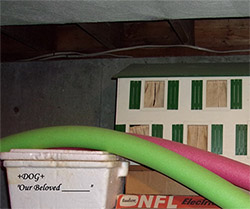
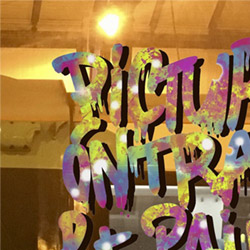
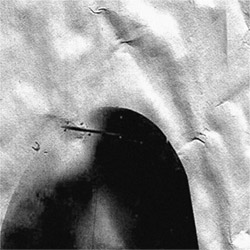
![Money : Money 2 [2 CDs]](https://www.teuthida.com/productImages/misc4/35894.jpg)
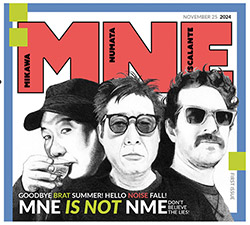
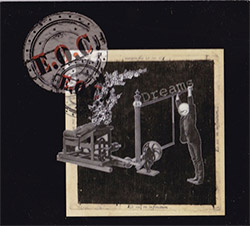
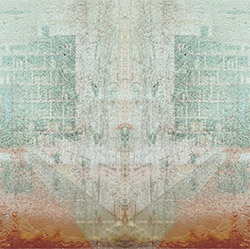
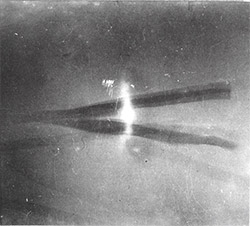
![Klinga, Erik: Elusive Shimmer [VINYL]](https://www.teuthida.com/productImages/misc4/36258.jpg)
![CHANGES TO blind (Phil Zampino): Volume 9 - I Wave on a Fine Vile Mist [CD + DOWNLOAD]](https://www.teuthida.com/productImages/misc4/36061.jpg)

![Wallmart / Rubbish: Asset Protection [split CD]](https://www.teuthida.com/productImages/misc4/35900.jpg)
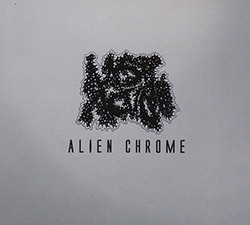
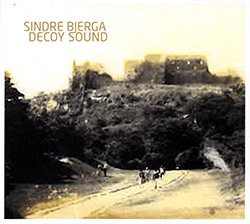
![+Dog+: The Family Music Book Vol. 5 [2 CDs]](https://www.teuthida.com/productImages/misc4/35897.jpg)
![Kuvveti, Deli : Kuslar Soyledi [CASSETTE w/ DOWNLOAD]](https://www.teuthida.com/productImages/misc4/36107.jpg)

![Nakayama, Tetsuya: Edo Wan [CASSETTE w/ DOWNLOAD]](https://www.teuthida.com/productImages/misc4/36105.jpg)
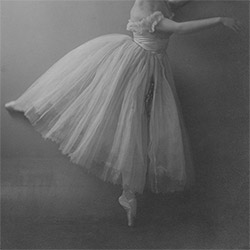
![Brown, Dan / Dan Reynolds: Live At The Grange Hall [unauthorized][CASSETTE]](https://www.teuthida.com/productImages/misc4/36245.jpg)
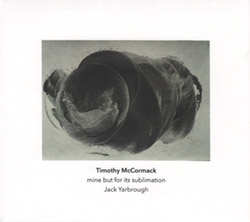

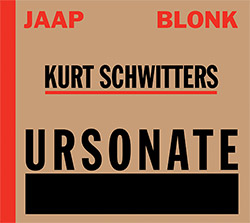
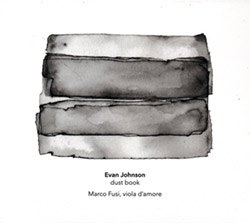
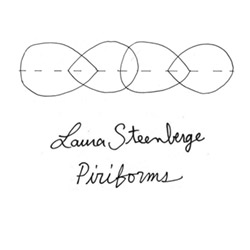
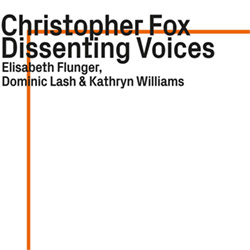

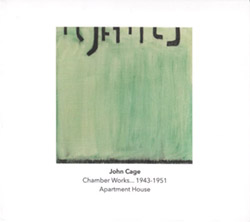
![Palestine, Charlemagne / Seppe Gebruers: Beyondddddd The Notessssss [VINYL]](https://www.teuthida.com/productImages/misc4/36206.jpg)
![Palestine, Charlemagne / Seppe Gebruers: Beyondddddd The Notessssss [NEON GREEN VINYL]](https://www.teuthida.com/productImages/misc4/36207.jpg)
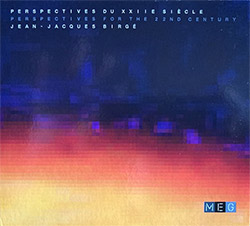
![Laubrock, Ingrid: Purposing The Air [2 CDs]](https://www.teuthida.com/productImages/misc4/35639.jpg)
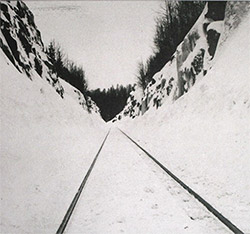
![Yoko, Ono / The Great Learning Orchestra: Selected Recordings From Grapefruit [2 CDs]](https://www.teuthida.com/productImages/misc4/35841.jpg)
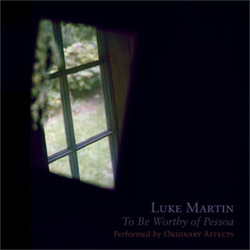
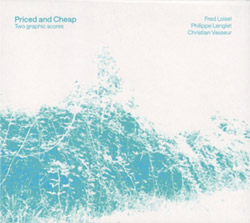
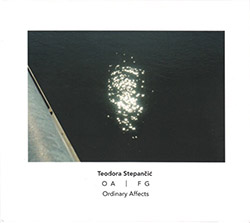
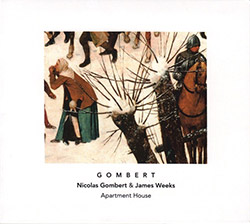

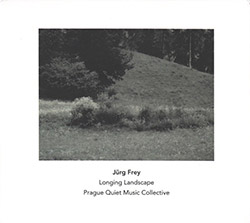


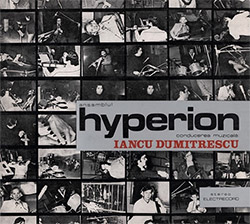
![Zorn, John / JACK Quartet: The Complete String Quartets [2 CDs]](https://www.teuthida.com/productImages/misc4/35609.jpg)

![Lonsdale, Eden: Dawnings [2 CDs]](https://www.teuthida.com/productImages/misc4/35480.jpg)

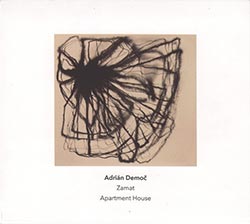
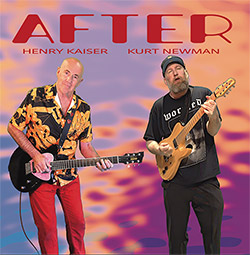
![Sorry For Laughing (G. Whitlow / M. Bates / Dave-Id / E. Ka-Spel): Rain Flowers [2 CDS]](https://www.teuthida.com/productImages/misc4/35985.jpg)

![Rolando, Tommaso / Andy Moor : Biscotti [CASSETTE w/ DOWNLOADS]](https://www.teuthida.com/productImages/misc4/36106.jpg)
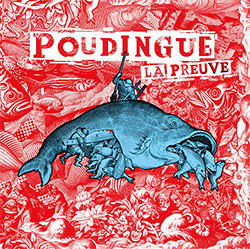

![Electric Bird Noise / Derek Roddy: 8-10-22 [CD EP]](https://www.teuthida.com/productImages/misc4/35970.jpg)
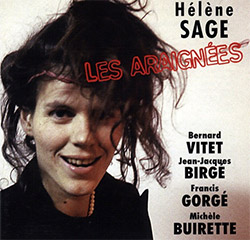


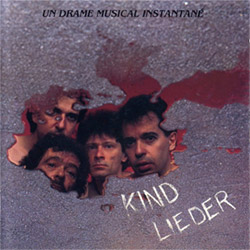
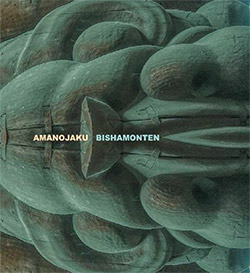
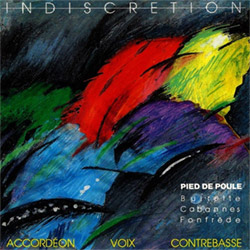
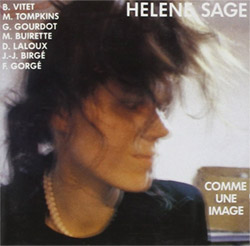
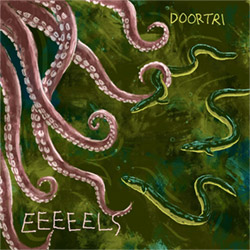
![Elephant9 : Mythical River [VINYL]](https://www.teuthida.com/productImages/misc4/34624.jpg)
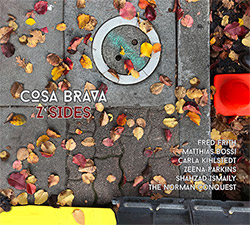
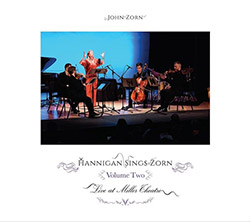
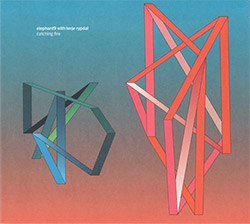
![Elephant9 with Terje Rypdal: Catching Fire [VINYL 2 LPs]](https://www.teuthida.com/productImages/misc4/35355.jpg)
![Deerlady (Obomsawin, Mali / Magdalena Abrego): Greatest Hits [VINYL]](https://www.teuthida.com/productImages/misc4/34876.jpg)
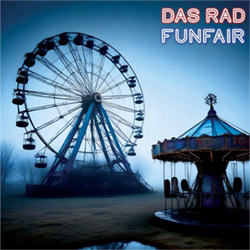
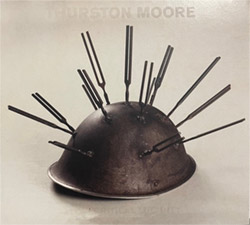
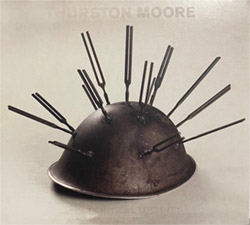

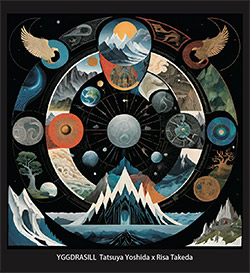
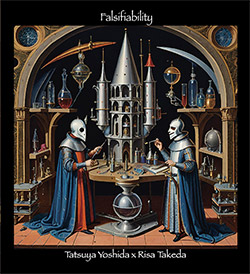
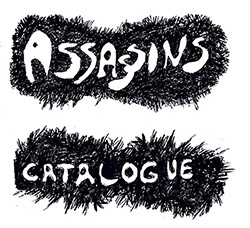
![Surplus 1980: Illusion of Consistency [CD]](https://www.teuthida.com/productImages/misc4/35069.jpg)
![Staiano, Moe: Away Towards the Light [VINYL + DOWNLOAD]](https://www.teuthida.com/productImages/misc4/35037.jpg)
![Coley, Byron: Dating Tips for Touring Bands [VINYL]](https://www.teuthida.com/productImages/misc4/17906.jpg)

![Lost Kisses: My Life is Sad & Funny [DVD]](https://www.teuthida.com/productImages/misc4/lostKissesDVD.jpg)